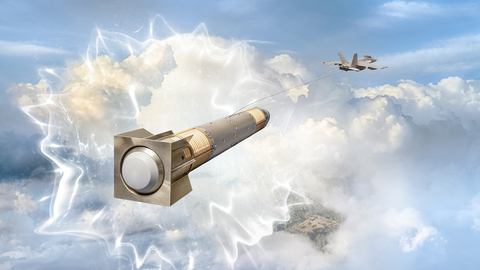BAE Systems to Develop Next-Generation Airborne Decoy Countermeasure
BAE Systems has been chosen by the U.S. Navy to develop the Dual Band Decoy (DBD), an advanced radio frequency countermeasure designed to protect fighter jets from enemy attacks. The DBD builds on BAE’s AN/ALE-55 Fiber-Optic Towed Decoy, using the latest jamming technology to disrupt enemy radars and lure missiles away. The system can be activated manually or automatically, ensuring important protection in contested airspace. Initially, DBD will be deployed on the U.S. Navy's F/A-18E/F Super Hornet and will be developed at BAE’s facilities in Nashua, N.H. The DBD is part of BAE's Intrepid Shield™ approach, enhancing performance with reduced size, weight, and power for future threat adaptability.
- U.S. Navy selected BAE Systems for the DBD project, signifying trust and potential revenue.
- DBD enhances AN/ALE-55 technology, providing advanced jamming to disrupt enemy radars and lure missiles.
- DBD can be installed on various aircraft, increasing its market potential.
- Upgradeability to future threats ensures long-term relevance and demand.
- Fielding on the F/A-18E/F Super Hornet can lead to further military contracts.
- Development at Nashua, N.H. facilities showcases BAE's cutting-edge capabilities.
- Integration into BAE’s Intrepid Shield™ enhances comprehensive protection solutions.
- The project involves high R&D costs, potentially impacting short-term profitability.
- Dependency on U.S. Navy contracts can pose risks if future funding decreases.
- Technical challenges and delays in development can lead to cost overruns.
- Competitive pressures from other defense contractors may affect market share.

The
Expanding the capabilities of BAE Systems’ combat-proven AN/ALE-55 Fiber-Optic Towed Decoy, DBD consists of a towed unit connected by fiber-optic cable to electronic warfare equipment onboard the aircraft. The decoy delivers the latest jamming technology to disrupt enemy radars and lure missiles away from the aircraft. DBD can be launched by the pilot or automatically in response to threats, offering critical protection in highly contested airspace.
“With Dual Band Decoy, we are building on the ALE-55’s years of mission success as a high-powered jamming system,” said Don Davidson, director of the Advanced Compact Electronic Warfare Solutions product line at BAE Systems. “Dual Band Decoy delivers broad capability that can be installed on a variety of aircraft and is upgradeable to address future threats.”
Dual Band Decoy incorporates the company’s custom integrated circuits, enabling higher performance and more capability with reduced size, weight, and power. DBD is an integral part of BAE Systems’ Intrepid Shield™ approach to creating a protective sphere around platforms in highly contested battlespaces using the full electromagnetic spectrum to detect, exploit, and counter advanced threats.
DBD will be initially fielded on the
View source version on businesswire.com: https://www.businesswire.com/news/home/20240515929918/en/
Mark Daly, BAE Systems
Mobile: 603-233-7636
mark.g.daly@baesystems.us
www.baesystems.com/US
@BAESystemsInc
Source: BAE Systems







